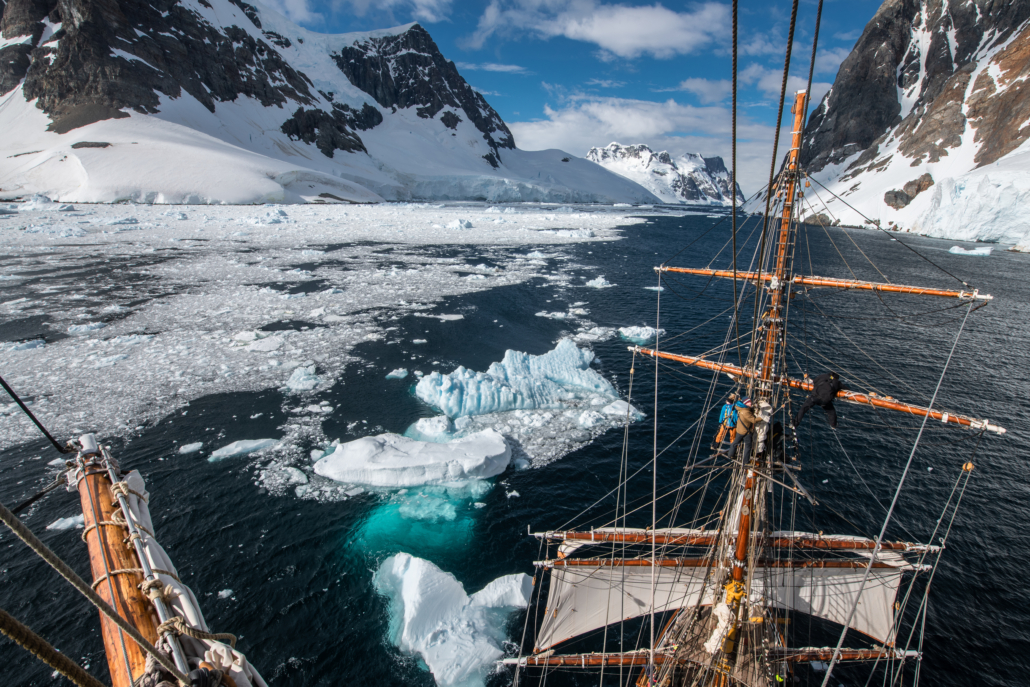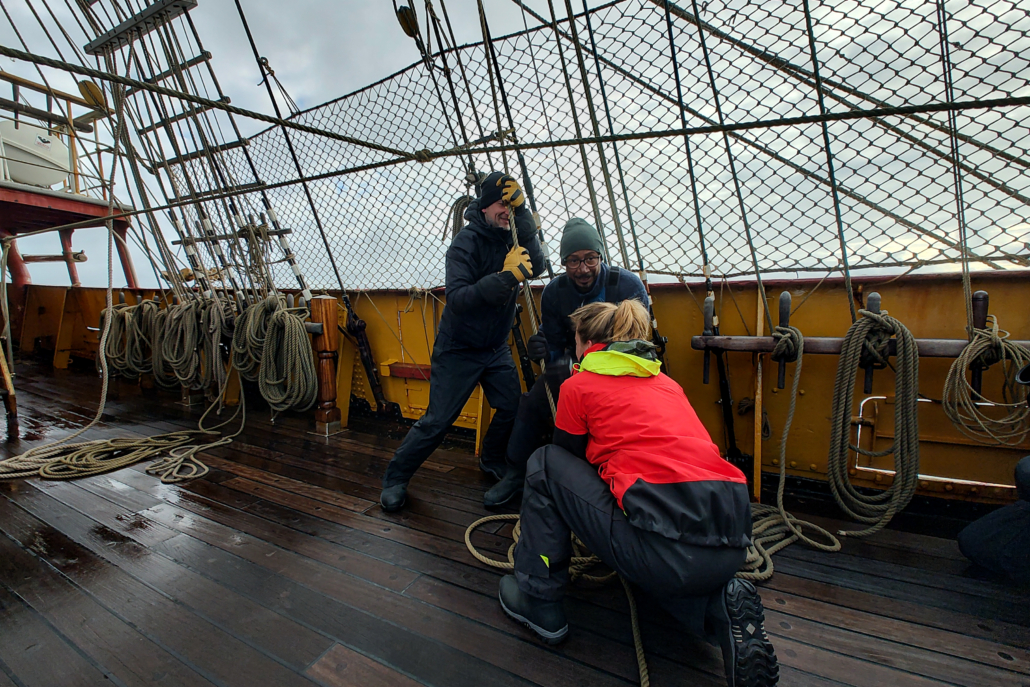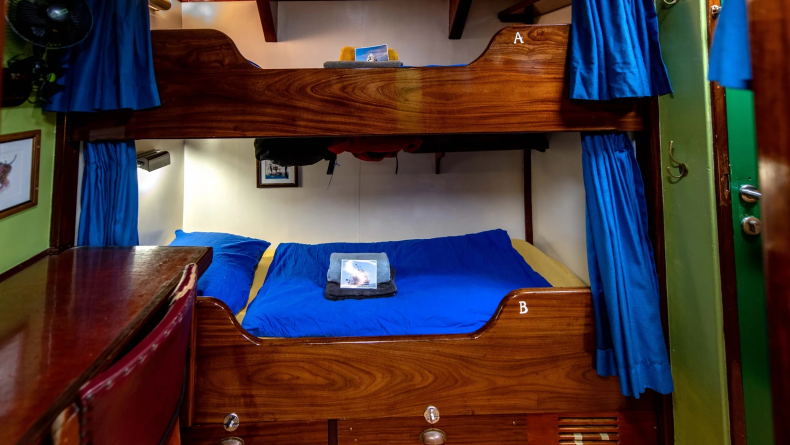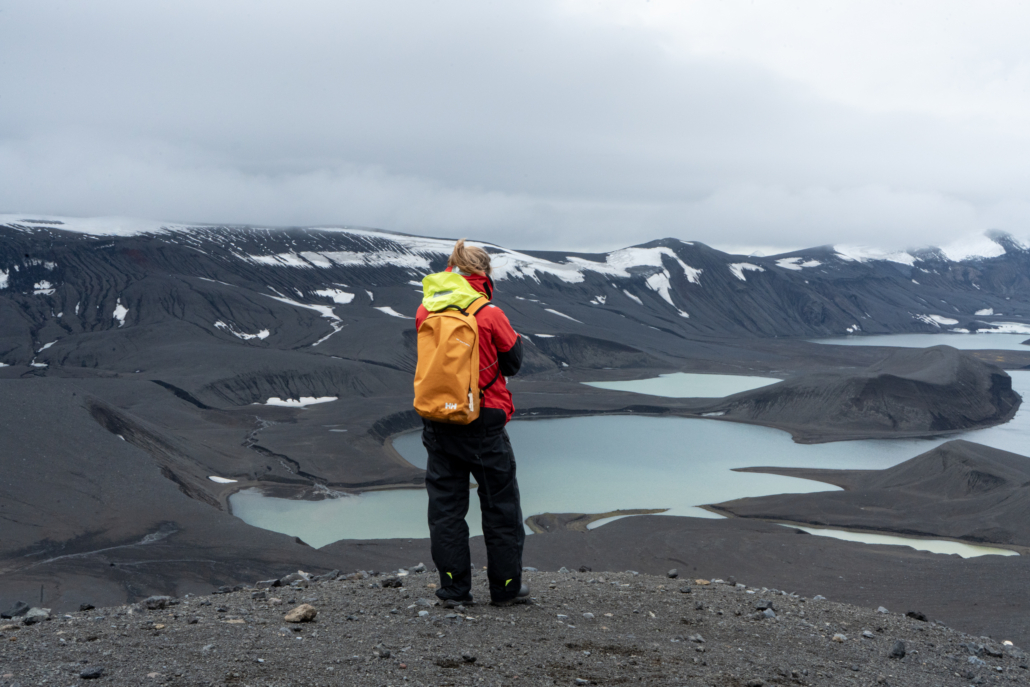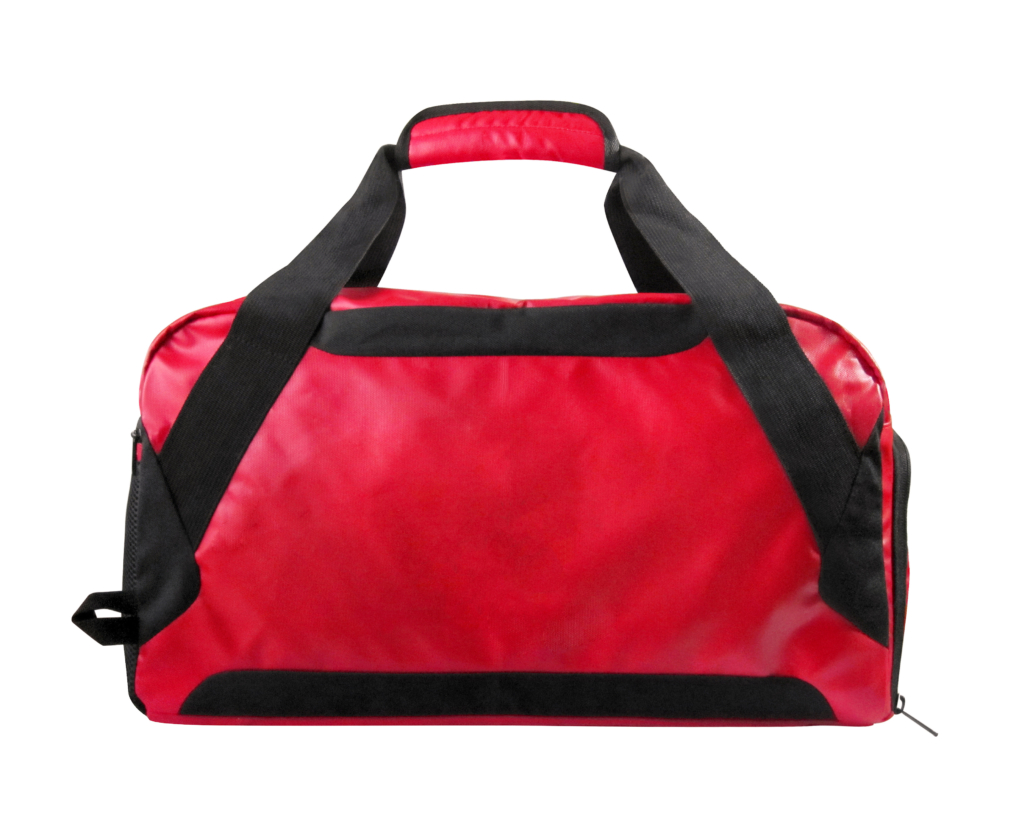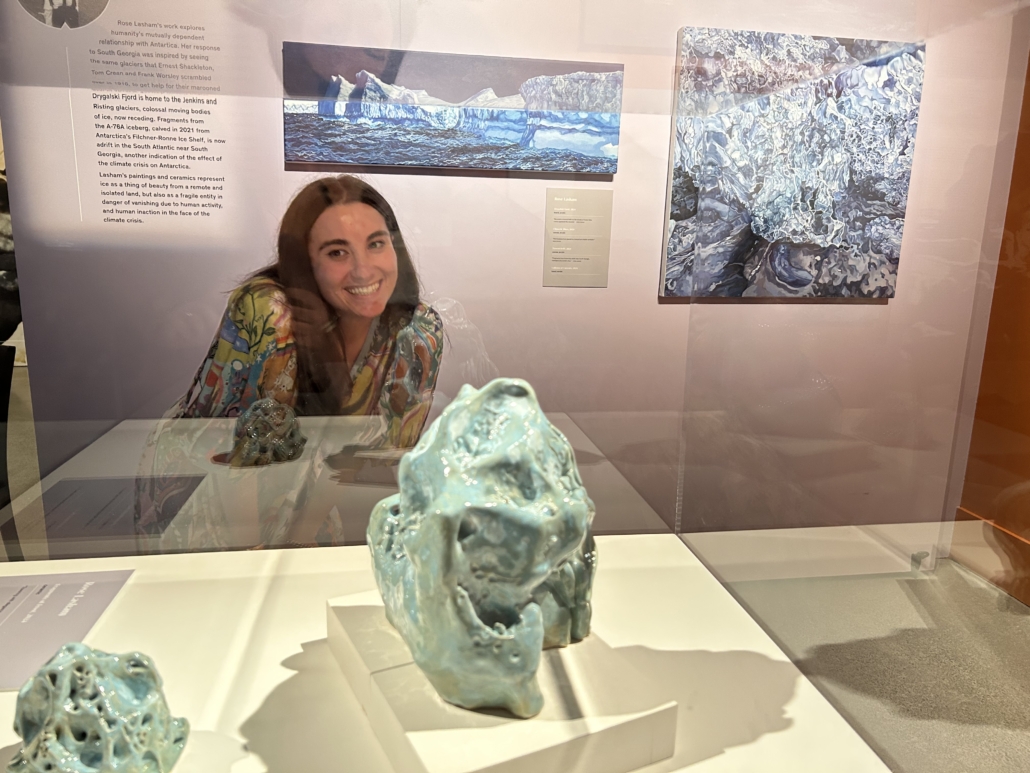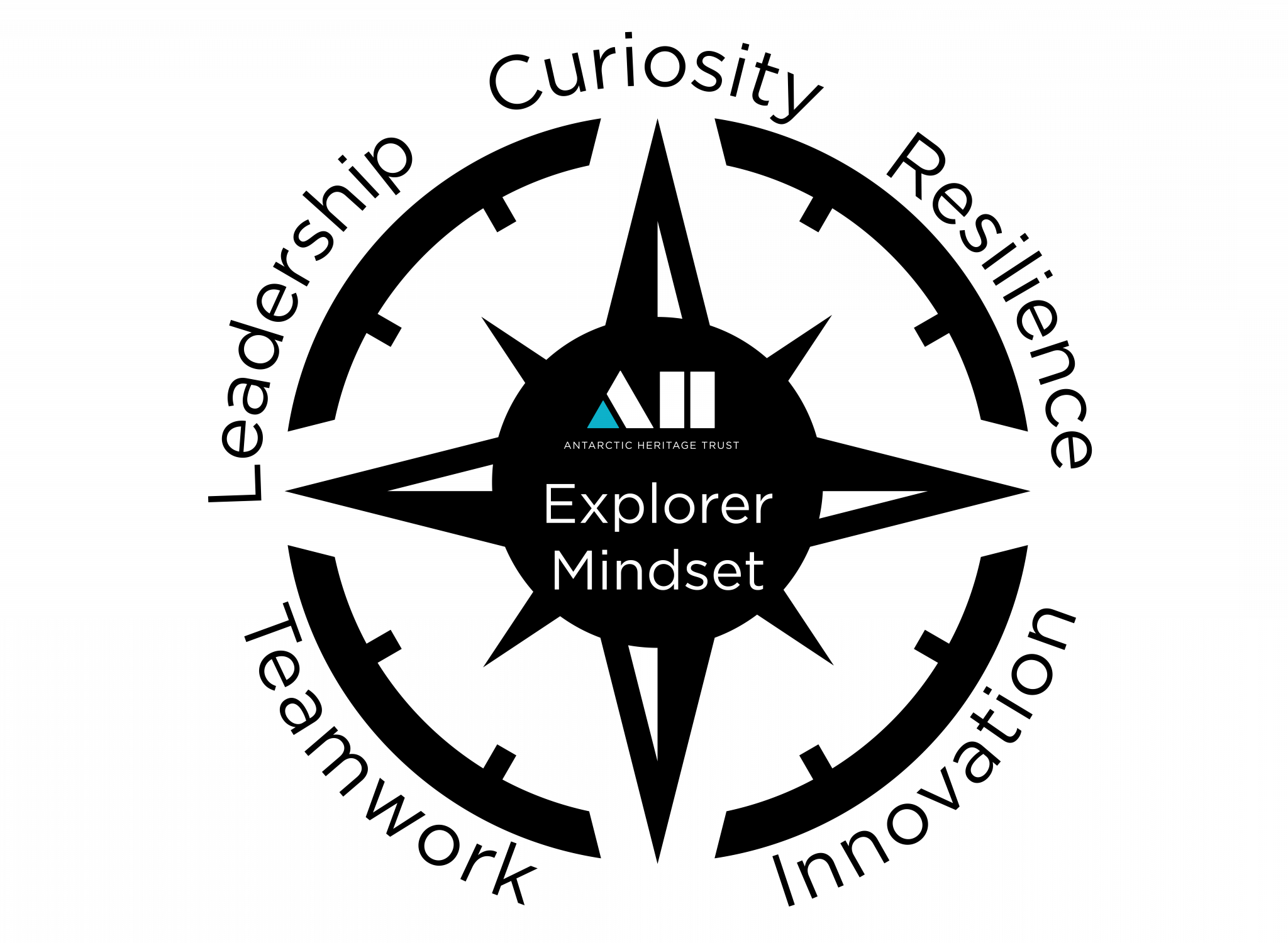Cost
How much will the expedition cost?
Antarctic Heritage Trust has fundraised extensively over the past few years to help cover the majority of the costs of this expedition for chosen Inspiring Explorers™. Donors to our Inspiring Explorers™ Fund as well as a discounted rate from Bark EUROPA, mean that we have been able to keep costs to an absolute minimum. We ask each Inspiring Explorer™ to contribute NZD $2000 towards the expedition, with a payment of $1000 to be made immediately upon acceptance and the remaining balance payable by 19 December 2025.
Antarctic Heritage Trust will pay for:
- All flights for the expedition
- All accommodation and incidentals directly before and after the expedition
- The expedition itself, including permits, guides, transport, food and group equipment costs
- Essential outer layer gear for the expedition
- Any travel required and accommodation for the team building and post-expedition programme weekends
- Travel insurance covering the expedition and associated travel
- Team building event and expedition debrief event
If selected for the expedition, you will need to cover the following costs:
- NZD $2000 towards the expedition
- Overweight/excess baggage fees (if required)
- Personal clothing and equipment (to be advised)
- Any visas relating to your passport
If you are a New Zealand citizen or permanent resident currently travelling outside New Zealand, you must cover the costs of returning to New Zealand for all the required dates for this expedition (team building in November 2025, the expedition in January 2026, and the post-expedition programme in April 2026).
What if I can’t afford the expedition cost?
Should you find the cost of the expedition a limiting factor then please reach out to us on our contact information, we will do all we can to make sure this opportunity is available to anyone meeting the eligibility criteria and make decisions on a case-by-case basis.
The Expedition
Are there fitness requirements?
A sailing journey with Bark EUROPA is a rewarding and demanding experience, all sailors must meet certain physical and health requirements to ensure a safe and enjoyable adventure on board.
All applicants should be of excellent fitness, good health and physical strength. From balancing on a rolling deck to climbing rope ladders and manoeuvring in and out of zodiacs, physical strength and good health are essential for safety and enjoyment.
The nature of the weather and temperature in Antarctica means a moderate level of fitness is required as the freezing conditions can be energy sapping.
Being comfortable in the water is essential, especially for safely boarding and disembarking from zodiacs before and after landings.
Click here to read Bark EUROPA’s full sailor requirements
How can I physically prepare for my voyage on board Bark EUROPA?
Whether you’re hauling ropes, climbing rigging or just staying steady on deck, being prepared for your voyage will make your time on board even more worthwhile. We advise you to train in the months before your trip, focusing on balance, strength and stability. You can find more tips for exercises here.
Is sailing experience required?
Bark EUROPA’s permanent crew will train you to be a sailor. No experience is needed, their crew will teach you everything along the way. Everyone is welcome to take the helm, set sails, assist with manoeuvres, navigation, weather observations, furling the sails on the yards and much more. The permanent crew will give lectures and instruct you during the voyage in steering, navigation and sail handling.
Are there language requirements?
Clear communication is key, so a strong grasp of English is required to follow safety instructions and procedures on board.
What will crossing the Drake Passage be like?
Crossing the Drake Passage is often one of the most memorable parts of the voyage. Conditions can be rough, with strong winds and large swells common in this region. Most people experience some degree of seasickness, it’s completely normal. Come prepared with medication or remedies that work for you. Watch the video below to get a better sense of what the crossing might look like.
The Drake Passage is known for its unpredictable seas. Wave heights can vary widely — on a calm crossing (sometimes called the “Drake Lake”), swells might be just a few metres. But during rougher weather (the infamous “Drake Shake”), waves can reach 6 to 10 metres or more. The crew is well experienced in navigating them safely.
What will I be doing on the ship?
As you all might know already, Bark EUROPA is a sail training ship and as such you will be mustered as voyage crew. This means that you will get extensive safety instructions and you and your fellow voyage crew will be placed in the watch system. Participating in sailing and running the EUROPA is a very big part of the overall experience on board. You will work together with your fellow voyage crew mates and the permanent crew. The watch system consists of joining the permanent crew for 4 hours, after which you will be off for 8 hours. It will involve stepping out of your comfort zone and teach you how to sail a tall ship! While on watch, you will take turns at the helm, on lookout and help with sail handling. Once we arrive in Antarctica however, we will stop the watch system to give everyone the chance to experience all landings per day. Once we’re back on the Southern ocean and the Drake Passage, we start with the watch system again!
Where is the Antarctic Peninsula and what’s it like?
The Antarctic Peninsula is the northernmost part of mainland Antarctica. It stretches toward the southern tip of South America and is the most accessible part of the continent by ship.
This region is known for its dramatic scenery — towering mountain ranges, glaciers that reach the sea, and icebergs drifting through deep blue waters. Despite its remote location, the Peninsula is rich in wildlife. You’ll see penguin colonies, seals on the ice, and whales feeding in the surrounding waters.
How long will it take to get to the Antarctic Peninsula?
The crossing typically takes approximately four days of sailing. During this time, Bark EUROPA will demonstrate her strength and resilience as you experience life aboard a working tall ship. You’ll reach the Antarctic Peninsula on day six, and typically spend another six days sailing around the region.
What will I see in Antarctica?
From Day 6 to Day 13 you will explore the Antarctic Peninsula by ship, zodiac, and on foot. Each day the ship anchors in sheltered bays, allowing for landings, cruises, and hikes through dramatic polar landscapes. You will see glaciers, icebergs, mosses, lichens, and active penguin rookeries. Seals rest on ice floes and shorelines, and whales are often spotted feeding near the ship. Wildlife encounters are constant, both on land and at sea. Guides provide insight into the region’s flora, fauna, and history throughout the voyage. Evenings offer quiet cruises through ice-filled waters, with stunning light just after sunset.
What will I do in Antarctica?
You will take part in daily activities that bring you close to the landscape, wildlife, and history of the Antarctic Peninsula. Each day typically includes a combination of zodiac cruises, shore landings, and guided hikes. You’ll explore glaciers, visit penguin colonies, observe seals and seabirds, and learn about the region’s ecology from experienced guides. On board, you’ll join lectures, help with ship duties, and take in the scenery from deck.
Will I have to share a room?
Yes. Our Inspiring Explorers Expedition™ team will have to share a bunk style cabin. Every cabin has its own bathroom with shower and toilet.
Are there gender specific rooms?
No. Our Inspiring Explorers Expedition™ team will have to share a bunk style cabin. Every cabin has its own bathroom with shower and toilet.
Is WIFI available on-board?
On board, there is no internet access. This creates an environment where you can escape the digital world and fully immerse yourself in the experience of sailing at sea and embracing the moment. Additionally, a designated person from your home front will have access to the captain’s phone number in case of emergencies.
Will I have phone reception?
Prior to boarding the ship there will be phone reception in most places the team will fly to and from between New Zealand and Argentina. There will be no reception when sailing to and from the Antarctic Peninsula.
We encourage you to purchase a roaming pack before departing New Zealand if you wish to use your phone for communication while overseas.
What if I get ill or seasick on the ship?
If you’re prone to seasickness then please see your GP before leaving for the expedition and they will likely prescribe some anti-nausea tablets, liquid or even patches.
Should you get ill on the expedition there is an on-board medic ready to assist you.
What if I take prescription medication?
Please bring an extra supply on the expedition to ensure you’re covered for any unexpected delays. Any regular medication should be noted in the forms that we will ask successful applicants to fill in.
How cold is it at the Antarctic Peninsula?
Climate of the Antarctic Peninsula is the mildest on the continent. During January, the average temperature is 2°C.
During summer, coastal ice melts down providing the very possibility of visiting the peninsula. Katabatic winds, which are basically cold air blown down from ice cover, calm down and warmer oceanic winds provide tolerable temperatures. However, it’s important to note that weather can be highly variable, and wind chill can make it feel significantly colder. Despite being the “warmest” month, you will still need to be prepared for harsh Antarctic conditions.
What country is the Antarctic Peninsula part of?
The Antarctic Peninsula is not part of any country. Like the rest of Antarctica, it is governed by the Antarctic Treaty System. Learn more about the Antarctic Treaty System here.
What if I want to learn more about the Bark EUROPA?
To learn more about Bark EUROPA’s voyage to the Antarctic Peninsula, you can visit their website here.
Dietary
I have a dietary requirement, can this be catered for?
Due to the unique nature and limited facilities on board the tall ship, unfortunately, Bark EUROPA is only able to accommodate standard diets and cannot cater for specific dietary requirements such as vegan, gluten-free, dairy-free, or coeliac diets. On board Bark EUROPA two meal options are available: vegetarian and non-vegetarian.
Do I need to let you know my dietary needs in advance?
Yes. You will be required to state any dietary requirements you have during the application process. Please note on board Bark EUROPA two meal options are available: vegetarian and non-vegetarian.
Is the food fresh and cooked on board?
Yes. All meals are freshly prepared by the ship’s cook using quality ingredients. The galley team cooks three meals a day.
Application and Selection
When do applications close?
Applications close 12 September 2025.
Who can apply for this expedition?
We are looking for a range of young people residing in New Zealand aged between 18–30 with an interest in Antarctic history, and a desire to grow their ‘Explorer Mindset’.
You must be a citizen or permanent resident of New Zealand.
All applicants must hold a valid passport.
Please read the full Eligibility Criteria and Expedition Member Obligations for all requirements.
What are the limitations around age?
While our application age range is between 18 – 30, we appreciate there are some unique situations around this. If you are currently 17 but will be 18 at the time of the expedition, you are welcome to apply. If you are currently 30 but will be 31 by the time of the expedition, you are also welcome to apply. In both these cases, please contact us on inspiring@nzaht.org for further instructions if you get stuck in the application process. Unfortunately, we can’t take any application from under 18s and will not look to process applications from anyone over 30 at the time of application.
What if I am a New Zealand citizen or permanent resident currently overseas?
New Zealand citizens or permanent residents who are living or travelling outside of New Zealand are eligible to apply, however you must cover the costs of returning to New Zealand for all the required dates for this expedition (team building 20-24 November 2025, the expedition in 10 January-10 February 2026, and the post-expedition programme 17-19 April 2026), and you must be able to show that you have met, or are able to meet, all immigration and health requirements.
What is the application process?
Please check the Eligibility Criteria to ensure you qualify for the Inspiring Explorers Expedition™ before applying. There are a few stages to the application process in which applicants will be vetted and some will not be able to carry on.
The application process is outlined below:
- Register/create an account.
- Part 1: Complete the online application form – written questions, contact information, referee details and declaration.
- Part 2: Record and submit video responses to interview questions (a link will be emailed to you to complete the video responses).
- Part 3: Shortlisted candidates will be invited to take part in a live video interview with the Antarctic Heritage Trust team.
- Part 4: Antarctic Heritage Trust will advise successful applicants.
Please contact us on inspiring@nzaht.org if you have any questions about the application process.
What is the selection process?
The Trust’s selection panel will review all applications and choose a shortlist of applicants to interview. Following interviews and reference checks the successful team will be advised. There will also be reserve spaces offered, in the event that a member of the team has to pull out.
Can I apply if I have a permanent disability?
Antarctic Heritage Trust welcomes applications from everyone and strives to be an inclusive and equitable organisation. This expedition will require a high level of physical and mental ability in order to meet the health and safety requirements set out onboard the ship and when on land. Please contact us on inspiring@nzaht.org to discuss your unique situation as we will strive to make this opportunity as accessible as possible.
Can I apply if I get seasick?
Yes, you can still apply. Seasickness is common during the Drake Passage crossing, and many people experience it to some degree. Bark EUROPA is a strong ship, but the sea conditions can be challenging, so it’s important to be prepared.
We recommend discussing any concerns with your doctor before the voyage and bringing any medication or remedies that work best for you. The crew is experienced in supporting guests through seasickness, and most people find their bodies adjust after the first couple of days.
What do I do if the video interview platform (Spark Hire) isn’t working properly?
If you have issues with the video interview platform then please reach out to us on inspiring@nzaht.org. Please note that Spark Hire is a third-party platform, so in many cases we will refer you to the Spark Hire website’s help function to solve any issues you may be experiencing. The Spark Hire video interview platform is compatible with most portable devices, so you can record on a small handheld device rather than a computer or laptop. Should you not have the equipment required to record your answer then please contact us and we’ll ensure you can get a full application submitted and be considered for one of the places on our expedition.
Can I change my application once it’s been submitted?
No. So please ensure you’ve planned exactly what you want to say and even had a practice before recording your video answers. You will be able to re-record your answers up to five times so practise beforehand. Please also be aware each video response has a set time limit. These time limits will be available for you to see to plan and practise your answer.
Can I bring or nominate a friend or partner to come with me?
We welcome you to share the expedition details with your friend or partner but please note everyone must apply through the same process. You are welcome to note/mention friends and partners within your application, but no preference or discrimination will be given on this basis.
Can I use my mobile to record my video responses to the interview questions?
The application website is mobile compatible, so you should be able to complete your application on your phone, including your video responses.
Should you have issues with this please contact us on inspiring@nzaht.org.
Will my application be shared with anyone else?
All applications are held securely through our application website adhering to the Privacy Act 2020. Information may be shared with our expedition partners in strict confidence as part of the selection process. Read our Privacy Policy here.
How do I contact you about my application?
Should you have any further questions then please contact us on these details:
Mike Barber – Inspiring Explorers™ Programme Manager
Email – inspiring@nzaht.org
Phone – +64 3 358 0212
Equipment
What specific gear do I need?
All participants will need to have their own clothing and equipment or be willing to hire any gear they do not have. The Trust will lend you free of charge sailing specific outer layer wear, and muck boots. These will be collected back after the expedition by the Trust.
The Trust will provide a team jacket to each team member as a memento and piece of quality Antarctic clothing.
A full gear list will be shared with successful candidates. You can expect this to include cold weather clothing, meaning warm layers, hats and gloves, quality cold weather clothing and good wind/waterproofs. Good UV protection is a must. Quality sunglasses and high factor sunscreen is also a must. Taking a pair of binoculars is advised as it will be a great way to see more of the amazing wildlife up close. A waterproof backpack or dry bag inside a day backpack is advised to carry your belongings during shore excursions.
How much will the gear cost?
Depending on how much gear you need, the cost of buying equipment and/or hiring equipment will vary. When sending out gear lists, we will aim to give you guidance on quality and locations for purchase as you don’t need to buy the most expensive equipment available to stay warm and dry. The Trust may be able to provide discounts for purchasing clothing through our industry links.
Should you find the cost of purchasing gear for the expedition a limiting factor then please reach out to us on our contact information, we will do all we can to make sure this opportunity is available to anyone meeting the eligibility criteria and make decisions on a case-by-case basis.
How much can I bring with me on the expedition?
Baggage will be limited to what an airline or Bark EUROPA can carry. Usually this is around 23kg plus hand luggage, but this will be confirmed with the successful applicants.
Can I bring a suitcase?
No. A duffle bag will be required as there is no space on board to store large suitcases.
Can I bring personal sponsorship on the expedition?
The Trust does not allow any formal sponsorship of our Inspiring Explorers™ personal contribution of NZD $2,000 towards the expedition. With the vast majority of the expedition costs fundraised for by the Trust, we have priority obligations to our current donors and sponsors. We highly encourage you to reach out to your community such as your church, local service organisations, clubs, to fundraise towards your personal contribution to the expedition. If you need support with this please contact Mike Barber at m.barber@nzaht.org and we can put you in touch with organisations that can help you fundraise for your contribution.
Can I bring my devices, phone, laptop, camera etc?
You’re welcome to bring any devices you choose. We recommend not bringing your most expensive gear. Successful applicants will receive further information on what expensive items may not be covered by insurance in due course. Any items we ask you to bring as part of your outreach will be covered, however it will be your responsibility to look after all personal items.
Can I bring a drone?
No. Antarctica requires permits for the use of drones.
Do I need to get insurance?
No, AHT will provide you with travel insurance that covers you and your belongings.
What is covered by the insurance?
Medical expenses, repatriation and cancellation of flights and accommodation (cancellation or emergency) is covered as well as your belongings. If bringing personal specialised equipment to complete the group outreach project is required, then the Trust will ensure this is covered also. Any personal expensive items you wish to bring may be outside of the cover but once the team is chosen, we can cover all these details (and read the small print) so you know exactly what is covered. There will be an opportunity for you to provide additional cover for any specific equipment you feel you wish to bring at your own risk.
Outreach
What are the outreach requirements for Inspiring Explorers™?
Inspiring Explorers™ are asked to complete three individual outreach activities and take part in a group outreach project. These are designed to help you share your experience and inspire others.
What kind of individual outreach presentations do I need to deliver?
You’ll need to deliver three presentations in your community. These could include speaking at your school or workplace, running an interactive session at your local library, or connecting with a community group you’re involved with.
Do I have to be an experienced public speaker?
Not at all. You’ll receive coaching and support to help you build your confidence in public speaking. We’ll also provide resources and help you prepare for your outreach activities.
What is the blog I need to write about?
Each Inspiring Explorer™ will write a blog post for the Trust’s website, reflecting on your experience and what it meant to you. We can support you with ideas, editing, and structure.
What is the group outreach project?
You’ll work together with your fellow Inspiring Explorers™ to design and deliver a creative group project that explores life on board a tall ship and connects it to the legacy of Antarctic exploration.
What formats can our group outreach project take?
This is completely open to your team’s creativity – it could be digital, visual, musical, written, filmed, or a mix! You’ll be encouraged to draw on your individual skills and passions to contribute to a compelling final piece.
What if I’m not sure what kind of outreach to do?
That’s completely fine. We’ll help you brainstorm ideas, connect you with potential audiences, and give you plenty of examples. You won’t be doing it alone.
Why is outreach a required part of the programme?
Outreach helps us share the story of the expedition and promote the importance of conserving Antarctica’s cultural heritage. Your stories have the power to create a ripple effect in your communities, sparking curiosity, awareness and a desire to go out and explore.
Can I collaborate with others on my outreach presentations?
Yes – you’re welcome to partner with other Inspiring Explorers™ or people in your community to deliver your outreach, as long as you’re involved in at least three separate engagements.
Will I be able to showcase my outreach on my CV or portfolio?
Absolutely. Your outreach work is a great opportunity to develop and showcase your storytelling, public speaking, teamwork, and creative communication skills.
Sustainability
Is this an environmentally friendly expedition?
Respecting the oceans is at the heart of Bark EUROPA’s ethos. They strive to increase the awareness of trainees who travel on their ship, drawing attention to the oceans and their vulnerability during voyages. They also inspire trainees to open themselves up to the beauty and diversity of ocean life. Through onboard lectures, collaboration with researchers, and promoting environmentally friendly products, Bark EUROPA aim for a more sustainable future. Read more about caring for the environment aboard Bark EUROPA here.
By lowering the ship’s average speed, the engine is used in the most favourable way, reducing the ship’s emissions. Keeping enough time in our planning for our voyages also offers the most opportunity to sail as much as possible, instead of using the engine.
Is there carbon offsetting for this trip?
Anything else!
What is the ‘Explorer Mindset’?
The Trust’s Inspiring Explorers™ programme is built around developing an ‘Explorer Mindset’. The qualities of curiosity, resilience, leadership, innovation and teamwork helped Antarctica’s early explorers to further science, test the limits of human endurance, and explore the unknown. Our expeditions involve programme work prior to the expedition, while on expedition, and when we return from the expedition. This is to develop your ‘Explorer Mindset’ to help in both your personal and professional lives. These qualities are what we want to help develop and in still in our community of Inspiring Explorers™ alumni.

